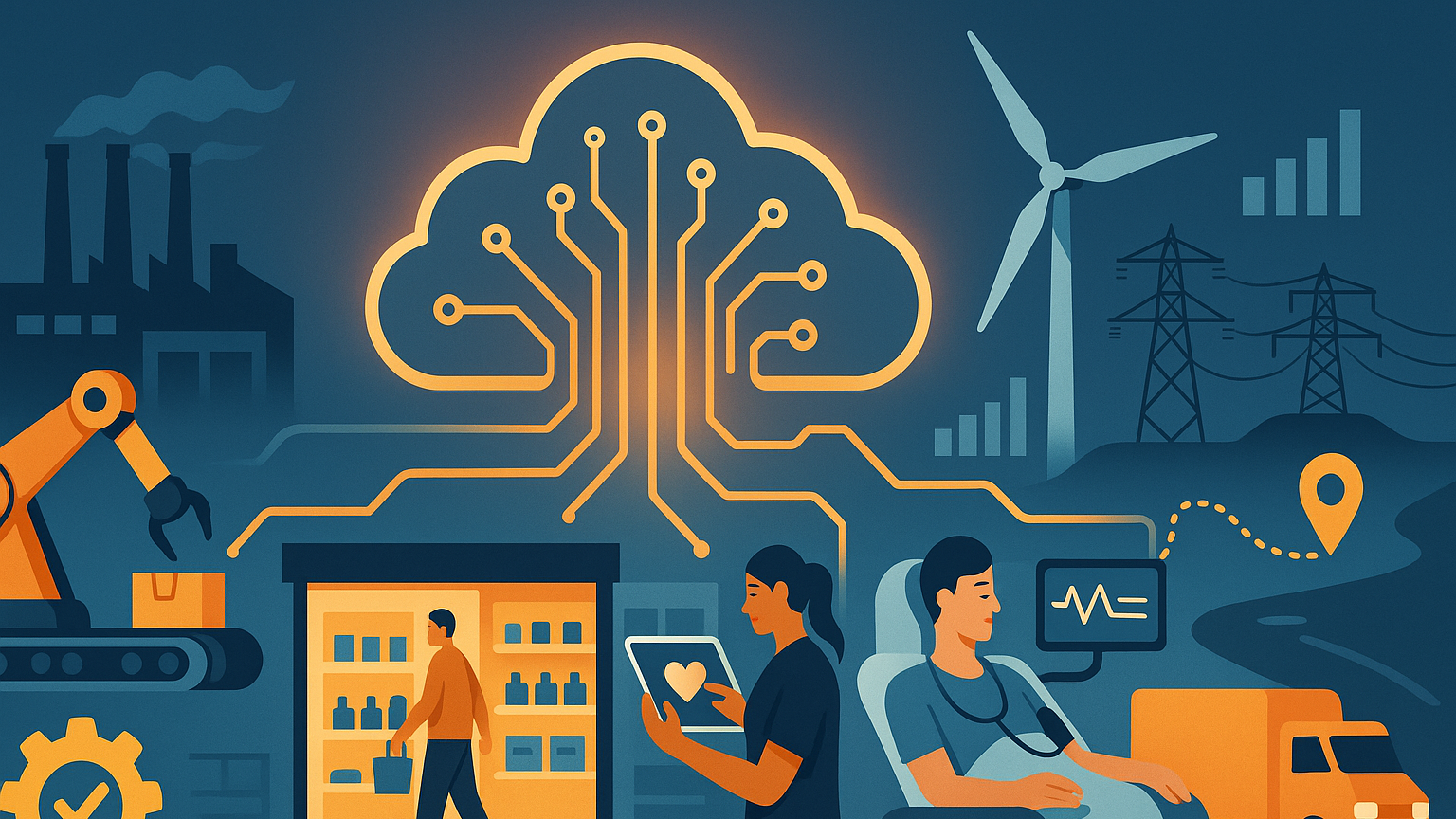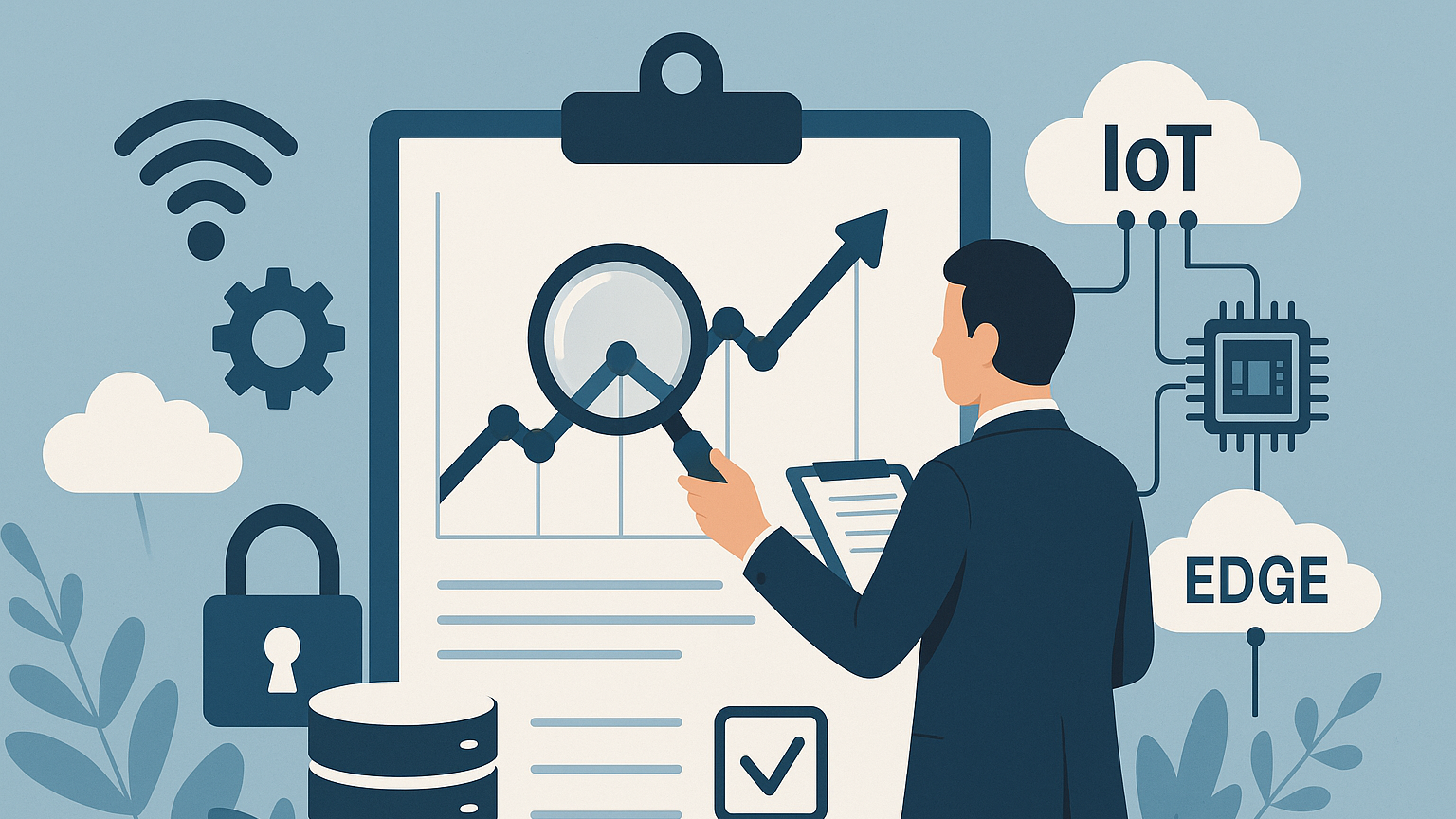
AI Awareness for Business Leaders on Edge Computing Implementation in the Internet of Things
You’re operating in a world where data is the new raw material, and you’re expected to turn it into actionable outcomes fast. Edge computing in the Internet of Things (IoT) reshapes how you collect, process, and act on that data, especially when you combine it with artificial intelligence (AI). This article puts AI awareness squarely in your hands, giving you the strategic context, practical advice, and implementation steps you need to lead successful edge computing initiatives that leverage AI to increase productivity, reduce costs, and enable new business models.
Why AI and Edge Computing Matter to You Now
You’re probably already dealing with data from sensors, devices, and apps across your operations. Centralizing all that data in the cloud can be costly, slow, and sometimes impossible due to latency or connectivity limitations. Edge computing moves compute closer to where data is generated, and when AI runs at the edge, you get real-time insights, automated decisions, and resilient operations. For you as a business leader, this translates into faster response times, lower bandwidth costs, improved privacy, and the ability to deliver differentiated services.
How This Article Helps You Make Better Decisions
This article is designed to give you targeted facts and advice so you can discuss AI and edge computing with technical teams and stakeholders, make smarter investment choices, and lead pilots that deliver measurable value. You’ll find explanations of architectural patterns, sector-specific examples, implementation roadmaps, governance and security considerations, and guidance on cost and ROI. The aim is to make AI at the edge approachable, practical, and aligned with your business goals.
Understanding Edge Computing in the IoT Context
What Edge Computing Is and Isn’t
Edge computing refers to processing data near its source—on devices, gateways, or local servers—rather than relying exclusively on centralized cloud resources. It isn’t meant to replace the cloud; instead, it complements it. You’ll still use cloud platforms for heavy analytics, long-term storage, and centralized control, while the edge handles immediate processing needs. Understanding that balance helps you allocate resources wisely and design systems that are both performant and cost-effective.
The Relationship Between Edge and IoT
IoT devices generate vast amounts of data from sensors, cameras, and other endpoints. The combination of IoT and edge computing lets you filter, summarize, and act on that data quickly without sending everything upstream. You should think of edge as the first line of processing: event detection, anomaly recognition, and rapid decision-making. This reduces latency and bandwidth use while enabling applications that require immediate action—like safety systems, predictive maintenance, or real-time personalization.
Why Latency, Bandwidth, and Resilience Matter
When milliseconds count—such as in industrial automation, autonomous systems, or critical healthcare scenarios—latency becomes a business risk if not addressed. Processing at the edge minimizes latency and reduces dependency on continuous connectivity. You also lower recurring bandwidth costs by transmitting only meaningful data to the cloud. Finally, by distributing compute, you improve system resilience; devices can continue to operate when networks are degraded or unavailable, which is crucial for maintaining operations and compliance.

The Role of AI at the Edge: Opportunities for Business Leaders
What AI Adds to Edge Computing
AI brings pattern recognition, predictive insights, and decision automation to the edge. You can use models to detect anomalies in machinery, classify images from cameras for security, or personalize customer interactions in retail environments. When AI runs locally, it enables proactive maintenance, quality control, and enhanced user experiences that would be impossible or too slow if all data were sent to the cloud.
Key Business Benefits You Can Expect
You’ll see benefits across cost reduction, revenue generation, and risk mitigation. Reduced downtime through predictive maintenance, fewer false alarms through smarter detection, and improved supply chain efficiency through localized optimization are tangible outcomes. In customer-facing scenarios, AI-driven personalization at the edge can increase conversion and loyalty. The decisive advantage is that these benefits come with faster responses and lower ongoing operational costs.
Typical Use Cases by Industry
Different sectors have unique demands, but the type of value you can extract is similar: faster decisions, lower costs, and new services. In manufacturing, predictive maintenance and quality inspection are prime use cases. Retail benefits from cashier-less stores and edge-driven personalization. Healthcare uses edge to enable real-time patient monitoring while protecting sensitive data. Energy and utilities optimize grid operations and remote asset monitoring. Logistics and transportation improve route optimization and fleet health monitoring.

Technical Fundamentals Business Leaders Should Know
Edge Architecture Layers Simplified
You’ll typically see three layers: the device layer (sensors and actuators), the edge layer (local gateways, on-prem servers, or smart devices), and the cloud layer (central analytics and long-term storage). AI models can run at the device or edge layer, with the cloud used for model training, orchestration, and historical analytics. Knowing these layers helps you make decisions about where to invest for performance, security, and compliance.
Types of Edge Devices and Their Capabilities
Edge hardware ranges from low-power microcontrollers used in simple sensors to powerful GPU- or TPU-enabled gateways and servers capable of running complex deep learning models. Your choices should be based on the compute requirements of the model, power constraints, form-factor needs, and environmental conditions. Recognizing the capabilities available to you helps avoid over- or under-specification when procuring equipment.
Model Deployment and Inference at the Edge
Deploying AI models to the edge isn’t just a one-time activity; it’s a lifecycle that includes training (often in the cloud), model optimization (quantization, pruning), and pushing models to edge devices with secure, reliable updates. Inference at the edge requires lightweight, optimized models that maintain acceptable accuracy while meeting latency, memory, and energy constraints. You should be comfortable asking your technical teams about their model optimization strategies and how they’ll manage updates and rollback.
Data Considerations: Collection, Processing, and Governance
What Data You Need and Why
Start with clarity on the business question you’re trying to answer. The data you collect should align with measurable outcomes—reduced downtime, improved conversion rates, or faster incident response. Avoid the trap of collecting everything “just in case.” Define the minimum viable dataset that delivers the required insights and preserves privacy and compliance.

Data Quality and Labeling Challenges
AI thrives on quality data. You’ll need robust processes for labeling, cleaning, and validating data, especially for supervised learning tasks. In many industrial scenarios, you must reconcile disparate sensor types and inconsistent sampling rates. Acknowledge that data preparation often consumes most of the time in AI projects and plan resources accordingly.
Privacy, Compliance, and Data Sovereignty
Processing data at the edge can reduce exposure of sensitive information, but it doesn’t eliminate legal and ethical obligations. You must comply with industry-specific regulations (e.g., HIPAA in healthcare, GDPR in Europe) and local data residency requirements. Ensure you understand how edge deployments affect compliance and that data governance policies extend to the device level.
Security and Risk Management for Edge AI
Threats Specific to Edge Deployments
The distributed nature of edge creates more attack surface: unsecured devices, physical tampering, and intercepted communications are common risks. Compromised edge devices can become entry points into broader systems or be used to manipulate decisions. Understanding these threats helps you prioritize investments in device hardening, secure boot, and encrypted communication.
Security Measures You Should Expect
You should insist on device identity and authentication, end-to-end encryption, secure over-the-air (OTA) updates, and runtime integrity checks for models and software. Hardware-based security modules and trusted execution environments add stronger guarantees. Contracts with vendors should include clear SLAs and security responsibilities to avoid ambiguity.
Business Continuity and Incident Response
Your incident response plan must cover edge scenarios: how to isolate compromised devices, rollback malicious updates, and continue safe operation when parts of the network are offline. Ensure your business continuity planning considers degraded mode operations—how operations continue without cloud connectivity—and how you’ll prioritize remediation for devices in the field.
Governance, Ethics, and Explainability
Defining Responsible AI at the Edge
You’re accountable for ensuring model decisions align with legal, ethical, and brand expectations. Responsible AI means bias mitigation, explainability, and fair treatment of affected individuals. When decisions happen at the edge, you must still be able to audit how decisions were made and verify models’ performance across subpopulations and scenarios.
Explainability and Traceability Requirements
Explainability is harder for edge models due to size constraints, but you still need traceability: logs of model versions, input data samples, and decisions. Ensure your architecture includes secure local logging and mechanisms to offload relevant forensic data to the cloud when needed, preserving continuity for audits and compliance.
Policy and Oversight Recommendations
Create governance structures that include cross-functional stakeholders—legal, compliance, security, operations, and business teams. Define approval processes for models, deployment standards, and periodic model reviews. You should also set thresholds for model drift and automated alerts that trigger retraining or human review.

Organizational Readiness and Skills
Building the Right Team Mix
Successful edge AI projects blend domain experts, data scientists, MLOps engineers, embedded systems developers, and operations staff. You should focus on hiring or partnering to fill gaps in model optimization, edge deployment, and device lifecycle management. Encourage cross-training so operations teams understand AI model behavior and data scientists appreciate hardware constraints.
Change Management and Process Integration
Edge AI changes workflows and roles. For example, maintenance teams will shift from reactive repairs to predictive interventions. Prepare your teams with clear communication, training, and incentives that align with new KPIs. Embedding monitoring and feedback loops ensures operations and models improve together.
Vendor and Partnership Strategies
You don’t have to build everything in-house. Evaluate cloud vendors, specialized edge platforms, hardware suppliers, and integrators based on your technical needs and business objectives. Prefer partners who provide transparent security practices, strong support for model lifecycle management, and clear pricing models. Avoid vendor lock-in where possible, and insist on interoperable standards.
Choosing the Right Technology and Vendors
What to Evaluate in Edge Platforms
You should evaluate platforms for device management, secure OTA updates, model deployment pipelines, and monitoring. Look for built-in support for model optimization tools and integrations with your existing cloud stack. Pay attention to developer ecosystems—strong SDKs and community support reduce time-to-market and maintenance burden.
Hardware Selection Considerations
Choose hardware based on compute needs, energy consumption, environmental tolerances, and lifecycle costs. If you need frequent model updates or heavy inference, opt for devices with accelerators (GPU/TPU/NPU). For constrained sensors, consider lightweight models or gateway-based inference. Factor in lifespan, spare parts availability, and vendor support in your procurement.
Avoiding Common Procurement Pitfalls
Don’t purchase a solution before you validate assumptions with a pilot. Beware of vendors that oversell “out-of-the-box” capabilities without clear integration plans. Ensure procurement includes clauses for security, support, updates, and exit strategies. You should also negotiate metrics-based SLAs tied to performance, uptime, and security remediation times.
Cost, ROI, and Business Case Development
Building a Financial Model for Edge AI
To justify investment, quantify both costs and benefits over time. Include hardware, software, connectivity, implementation, training, and ongoing maintenance. Balance those against quantifiable outcomes—reduced downtime, labor savings, improved throughput, or new revenue streams. Use conservative assumptions for model accuracy and adoption rates to avoid overpromising.
How to Measure Impact with KPIs
Define clear KPIs that map to business objectives, such as mean time between failures (MTBF) improvement, percentage reduction in false alarms, increased throughput, or higher customer retention. Track operational metrics (latency, bandwidth usage, device uptime) and business metrics (cost savings, revenue attributable to new capabilities) to prove value.
You can use a short list of KPIs:
- Predictive maintenance accuracy and reduction in downtime
- Latency improvements and percent of decisions made at edge
- Bandwidth cost savings and data reduction percentage
- Business outcome metrics tied to revenue or customer satisfaction
Financing and Phased Investment
You don’t have to fund everything at once. Use pilots and phased rollouts to demonstrate value and unlock additional funding. Consider financing hardware through leasing, or exploring managed services to convert capital expenses into operational ones. Be prepared to iterate your business case as pilots reveal real-world performance.
Implementation Roadmap: From Pilot to Scale
Starting with a Focused Pilot
Begin with a narrowly scoped pilot that targets a clear business problem and a manageable number of devices. Define success criteria up front, such as percent reduction in downtime or time-to-detection improvements. Use the pilot to validate assumptions about data quality, model accuracy, network constraints, and operational workflows.
Iteration and Learning During Pilots
You should treat the pilot as an experiment. Expect adjustments to data collection methods, model thresholds, and deployment processes. Capture lessons learned about edge device behavior and operational impacts. Use this phase to refine governance, security, and monitoring practices before scaling.
Scaling Across the Organization
Scale only after pilots meet defined success metrics and you’ve confirmed operational readiness. Standardize deployment patterns, automation for device provisioning, and centralized monitoring. Plan for incremental rollouts by geography, facility, or device class to manage risk while delivering value faster.
Monitoring, Maintenance, and Continuous Improvement
Operational Monitoring You Should Implement
Implement monitoring for device health, model performance, data integrity, and security events. You should track drift in model predictions, changes in input distributions, and environmental indicators that may affect performance. Alerts should be actionable and tied to remediation playbooks.
Model Retraining and Lifecycle Management
Models degrade over time as environments and behaviors change. Establish triggers for retraining based on drift detection, error rates, or planned model improvements. Automate the pipeline where possible for data collection, labeling, training, validation, and safe deployment to edge devices with rollback capabilities.
Support and Field Maintenance Strategies
Edge deployments require clear support models for field maintenance and replacements. Provide technicians with tools for diagnostics, remote access, and secure device updates. Maintain telemetry to anticipate hardware failures and plan for spare inventory and replacement logistics.
Legal, Regulatory, and Ethical Considerations
Regulatory Landscape by Sector
Different industries impose different constraints. You should understand relevant rules—such as HIPAA for patient data, aviation regulations for autonomous vehicles, or energy sector rules for grid management. Compliance needs to be baked into design decisions early to avoid costly rework.
Contractual and Liability Issues
When AI makes decisions in the field, liability becomes a business concern. Clarify contractual responsibilities with vendors and partners about model failures, misbehavior, and security breaches. Define who is responsible for data protection, firmware updates, and compliance reporting.
Ethical Use and Reputation Management
Beyond compliance, ethical considerations affect trust and brand value. Transparent communication about how you use AI, safeguards you’ve implemented, and how customers or employees can contest decisions builds stakeholder confidence. Plan for ethical oversight and public-facing disclosures where relevant.
Real-World Examples to Learn From
Manufacturing: Predictive Maintenance at the Edge
You’ll find many manufacturers using edge AI to predict equipment failures before they happen, using vibration, temperature, and acoustic sensors. These deployments reduce downtime and spare parts costs while improving throughput. The critical element is integrating AI insights with maintenance workflows and spare-parts logistics.
Retail: Personalized Experiences and Loss Prevention
Retailers use edge cameras and sensors to analyze foot traffic, optimize layouts, and enable cashier-less checkout experiences. Edge inference preserves customer privacy by avoiding raw video transfer and reduces latency for instant interactions. You should focus on balancing personalization with privacy controls.
Healthcare: Real-Time Monitoring and Triage
In healthcare, edge AI is enabling continuous patient monitoring and local triage in remote settings. Because patient data is sensitive, edge processing helps you limit exposure while enabling rapid clinical responses. Ensure clinical validation and regulatory approvals are part of your timeline.
Logistics: Fleet Health and Route Optimization
Fleet operators deploy edge devices to monitor vehicle health in real time and optimize routes based on local conditions. Edge AI reduces connectivity needs and allows vehicles to adapt dynamically to traffic or mechanical issues. Integration with back-office logistics systems maximizes operational efficiency.
Future Trends and Strategic Considerations
Advances in Edge Hardware and Model Efficiency
You should expect continuous improvements in edge accelerators, energy-efficient processors, and model compression techniques. These advances will allow more complex models to run locally, enabling richer applications. Keep an eye on hardware roadmaps and emerging standards to avoid obsolescence.
Hybrid Architectures and Federated Learning
Federated learning and hybrid cloud-edge architectures let you train models across distributed devices without centralizing all raw data. This approach preserves privacy and leverages local insights. Consider these paradigms when designing scalable solutions that require collaboration across locations.
Business Models Enabled by Edge AI
Edge AI opens new service models: real-time analytics subscriptions, outcome-based contracts (e.g., uptime guarantees), and pay-per-insight models. Think beyond cost savings—look for opportunities to monetize improved insights or new capabilities that differentiate your offerings.
Final Recommendations for Business Leaders
How to Get Started Today
Start with a problem that is tightly scoped, measurable, and impactful. Assemble a cross-functional team, choose a small pilot environment, and set clear success criteria. Use the pilot to validate technical assumptions and capture operational workflows. Prepare realistic cost and ROI models, and plan for governance and security from day one.
Questions You Should Ask Your Technical Teams
Ask how models will be optimized for edge constraints, how updates and rollbacks are handled, what security practices are in place, and how data governance extends to devices. Request a clear plan for monitoring and retraining and insist on KPIs that map to business outcomes. These questions ensure technical decisions align with strategic goals.
Long-Term Mindset and Continuous Learning
Edge AI is a journey, not a one-off project. Expect ongoing model maintenance, hardware refresh cycles, and evolving regulations. Promote a culture of continuous learning, invest in skills development, and foster partnerships that bring both domain and technical expertise. Your ability to adapt will determine whether edge AI becomes a competitive advantage.
Closing Thoughts
You’re at a point where practical, well-governed AI at the edge can deliver real business value across industries. By focusing on clear business outcomes, ensuring robust data and security practices, and adopting a phased, metrics-driven approach, you can unlock the benefits of edge computing in the IoT. Lead with clarity, demand accountability, and use pilots to build confidence before scaling.
If you found this article useful, please clap, leave a comment with your thoughts or questions, and subscribe to my Medium newsletter for updates on AI, edge computing, and practical strategies for business leaders.
